At the onset of this trip, I thought we’d have a chance to practice and learn some Japanese. Perhaps I could pick up a phrase or two, or ask for the whereabouts of a restroom. It shouldn’t be hard to at least see some improvement in my pronunciation of the limited vocabulary that I commanded (two words: thank you and excuse me). It didn’t happen. Or let’s just say that we gave up at the comfort of being silly foreigners. I rationalized that if English plus body language could get us nonsmoking seats, restroom, and the right dishes at a restaurant, there was no reason to insist on thanking the wait staff in their own language. As a result, the only knowledge about the Japanese language that I acquired as an ignorant tourist were:
- About 80% of the things ever said in public areas went “[something something something]maaaaaaaaaaaaas” or “[something]seeeeeeeen”, and most of them were in annoyingly cutesy-wannabe high-pitch female voices.
- All the Japanese words that I knew well, i.e. names of places, were pronounced nothing like what I imagined. For example, Harajuku actually wasn’t “HAA RAA JUU KUU”, but instead “hala JUU KOO”. And I still couldn’t say it like the train announcement said it.
The Meiji Shrine in Harajuku was our first stop of the day, after a smokey breakfast at an European diner that wasn’t very good. This was the shrine for Emperor Meiji, the dude with the Restoration that propelled a country forward like nobody else in human history (per Dr. Boyer’s World Regions class). Before coming to Japan, a coworker kindly warned me not to visit the war shrines worshiping the “criminals”, and I wondered if the Meiji Shrine fell borderline into that category as he made it possible for Japan to bully the rest of the Orient. Now, standing at the entrance looking into the forest entirely made of privately-donated trees from all over Japan, it was difficult to not be impressed by the respect and love this guy had.
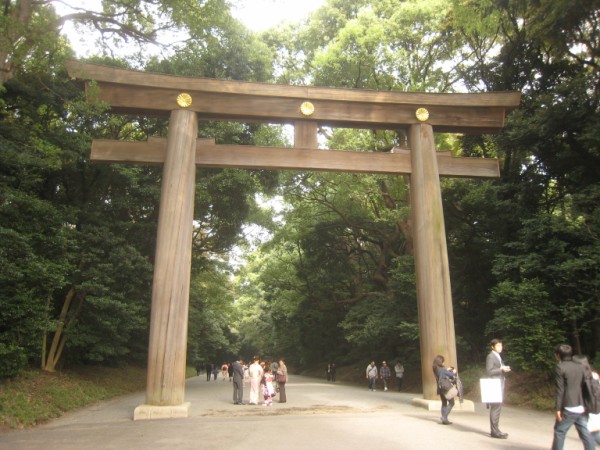
Structure-wise, it was just another Shinto shrine with no particular architectural marvel. However, this place was filled with not only tourists but also locals who actually came to worship. We spent the majority of the visit watching family after family dressed in traditional outfits, and even spotted a wedding photo session. The kids were all so well behaved that we wondered whether they were born mute and inactive. Some white people followed the Japanese rituals at the shrine, but what good would it do to pray to somebody else’s god? Remember Americans: Emperor Meiji probably won’t smile upon those whose air raid in WW2 destroyed his original shrine!
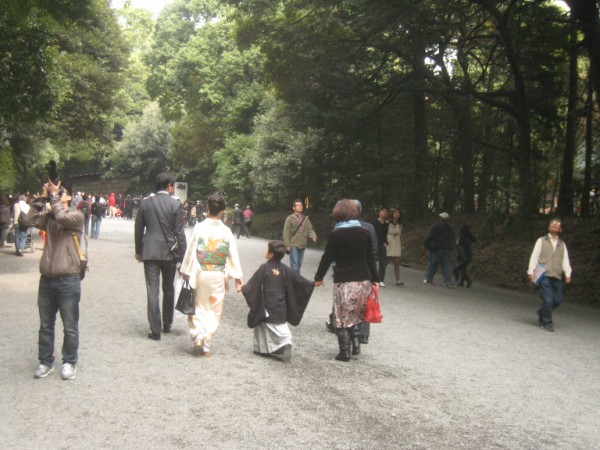
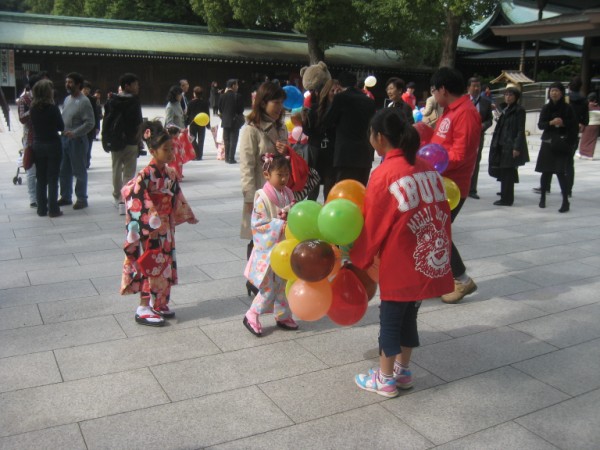
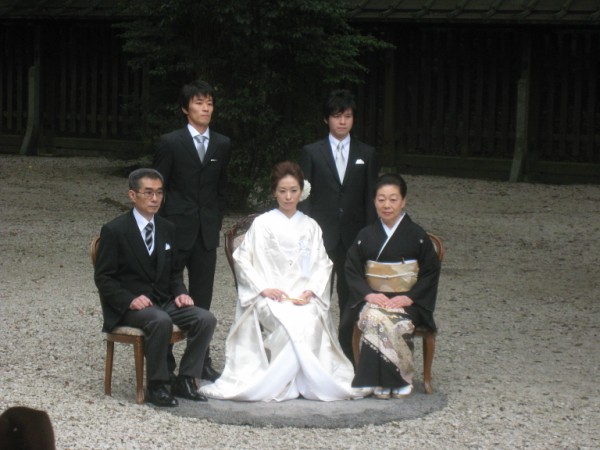
Driven partly by curiosity and partly by the desire to piss off the Whale Wars crew, we made a detour to Shibuya for the famous whale restaurant. Upon discovering that we weren’t Japanese, the startled waiter tried very hard to communicate that they specialized in whale by both pointing at and attempting to pronounce the English spelling next to the cash register. Made me think that it must have upset some tourists who ignorantly wandered into this place before. Made me want to eat it even more eagerly. Since this visit was about a unique culinary experience rather than a delicious feast, I went all the way Japanese and got a sashimi set course. The meat was dark red in color like beef that had been frozen for too many months, and everything it touched got a bloody stain. It was tougher than all kinds of fish but not as chewy as octopus/squid. There was no significant smell or taste, unlike what I imagined, and the experience was roughly as (un)delicious as tuna sashimi sold in the US. I couldn’t quite say whether I liked it or not, which was sad given this being my first time eating uncooked red meat. Hong wasn’t as thrilled with the idea of eating a truck-sized mammal so she only got a plate of fried whale. It was also kind of bland in taste. The small restaurant had a very elegant setup, though, with elevated stepping stones in the narrow hallway. If we ever come back again, I’d order a la carte and try the skin, the heart, and the testicle.
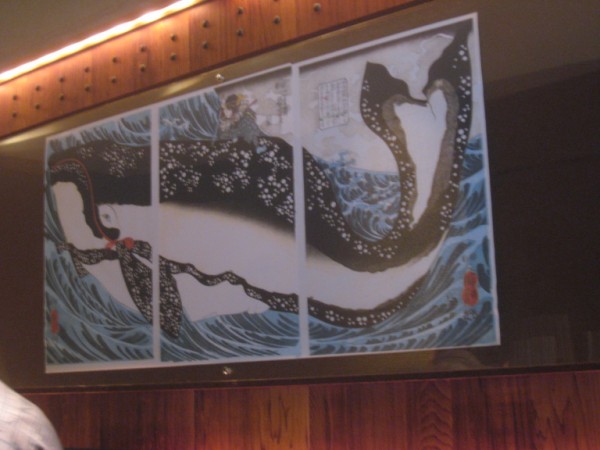
Painting: samurai slaying a whale. Reminded me of Old Man and the Sea.
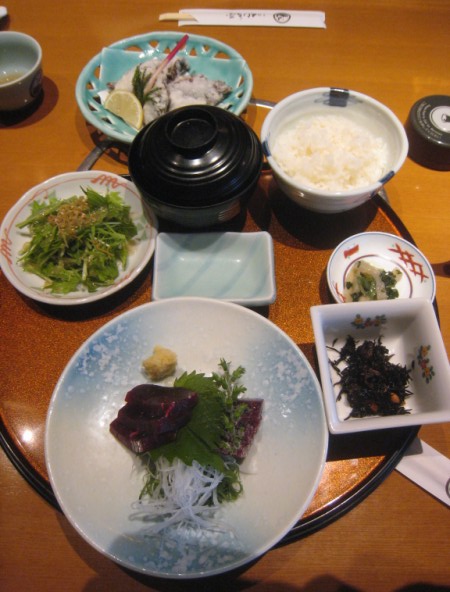
After hopefully grossing you out, we went back to Harajuku with high hopes to witness some cosplayers and gothic lolitas, who, according to travel guides, always overrun this neighborhood on Sunday afternoons. We saw none, and the few rockability dancers at the Yoyogi Park entrance didn’t count. It was disappointing, but the shopping crowd on Takeshita Dori were all dressed in a visually appealing fashion, enough to make Hong want to follow. While she shopped, someone in the store saw my VT TKD sweat shirt and came over to say hi – another Hokie close to my year. As we struggled to figure out whether we might’ve had a class or club in common, we realized that we were both in Japan for honeymoon, and both leaving tomorrow. Obviously, he was also in the store because his wife wanted a piece of the Harajuku fashion. What a coincidence! And what power the Hokie Nation has to bring people together!
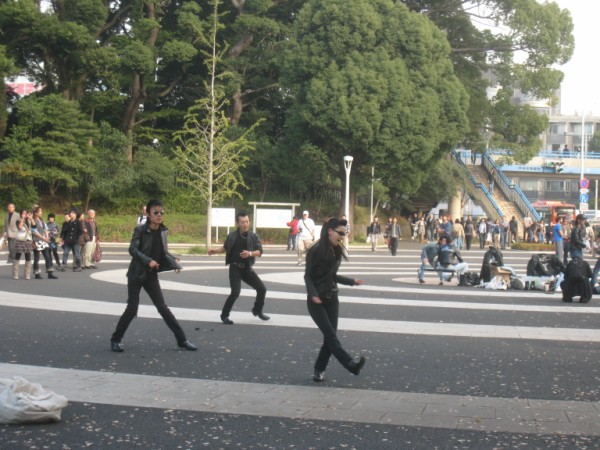
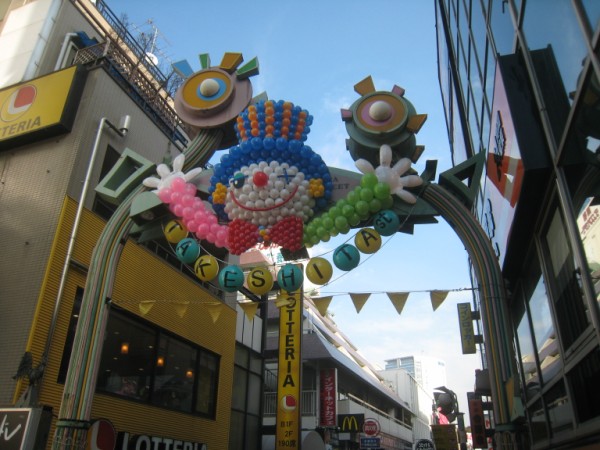
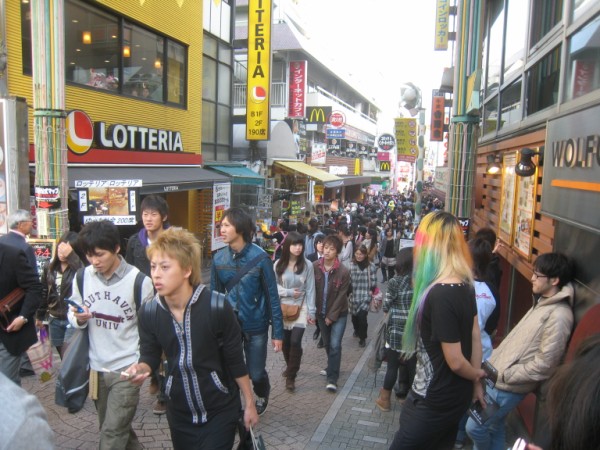
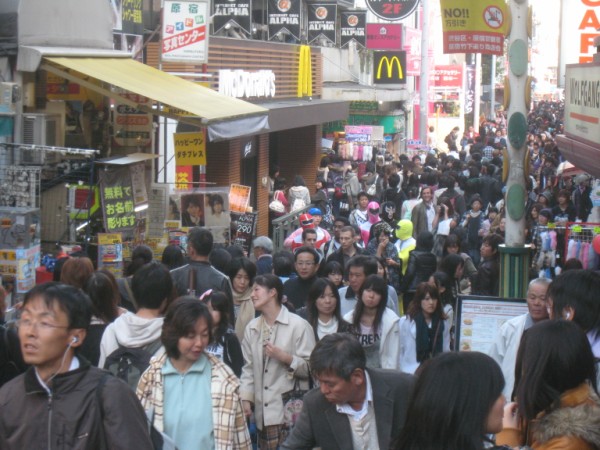
Spot the Power Rangers
While enjoying the famous Harajuku crepe, we heard two brief clips of modern Japanese songs. That was the first time in the entire week that we heard anything other than American top 40 or depressing old school Japanese music. And I thought j-pop was popular throughout Asia?
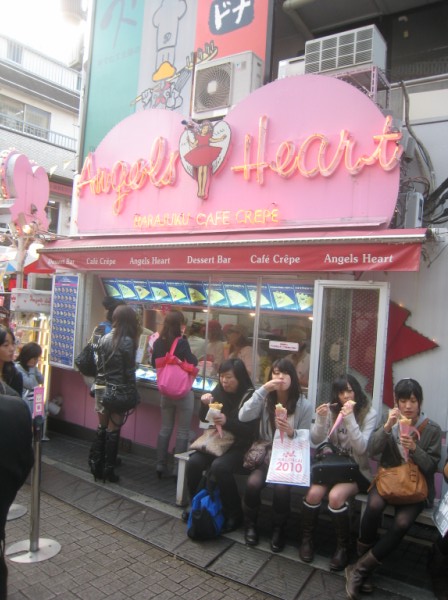
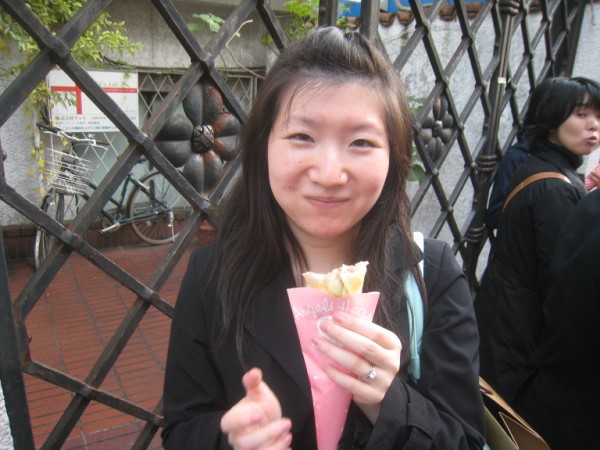
Next up was Omotesando Hills, a high-end shopping mall built on a slope and had a multi-level, sloped interior. Like many other establishments throughout Japan, it had been fully decorated for Christmas despite still having patrons in short sleeves and mini skirts. We quickly walked through it and continued onto Kiddy Land, their equivalent of Toys R Us.
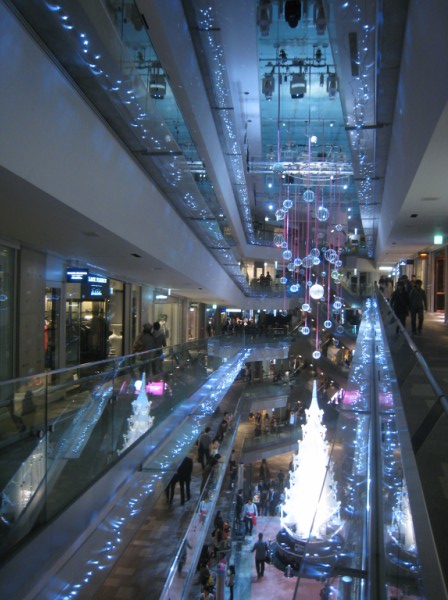
In the evening, we returned to Shibuya. In front of the train station was Hachiko, the famous statue of the loyal dog. Finally seeing it was like, eh, so ugly.
There was also the world-famous five-way intersection. When the light turned, pedestrians poured into the intersection from all directions, going in all directions. Outside Japanese TV, this was likely the most chaotic scene one could see in this country. It was scary even for a couple used to navigating through Times Square and NYC Chinatown.
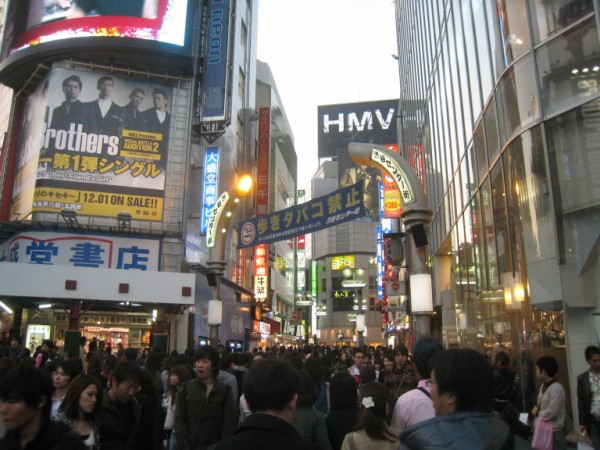
Since we have both become hardcore fans of Japanese dessert, we decided to have dinner at Sweets Paradise, an all-you-can-eat dessert restaurant. It wasn’t entirely dessert (how gross would that be?), but the cakes, pies, and shaved ice condiments did occupy the majority of the food counter. There were also so-so pasta, good curry, and delicious soups that we warmed our tummies with. Like all buffets, the food quality was below par but the pig-out component was awesome. We noticed yet another Japanese-styled attention to detail: the restaurant prepared both warm and chilled plates for your needs for different types of food. Dang!

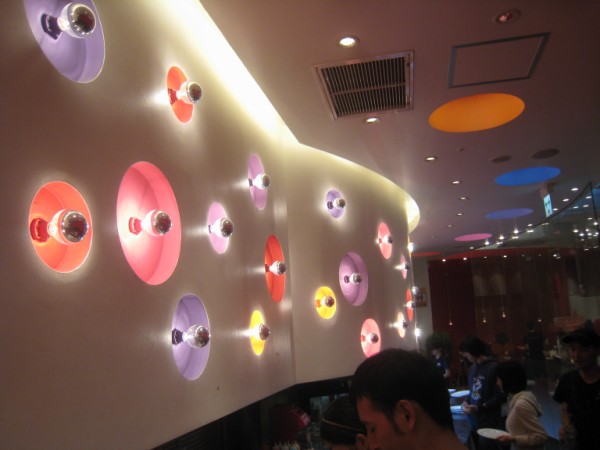
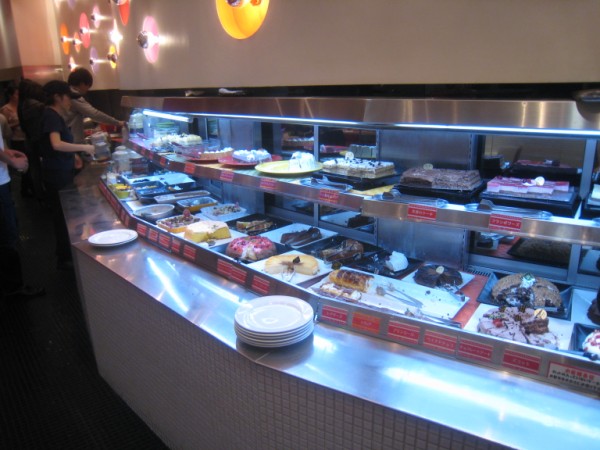
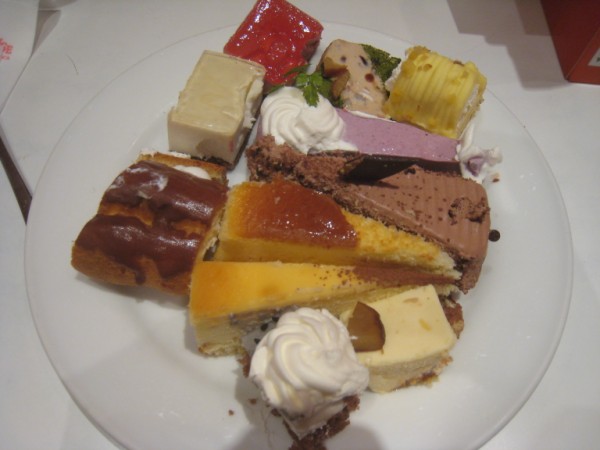
Three train stations later, we returned to Shinjuku. The last stop before bed was the 45th-floor observatory in a Tokyo Metropolitan Government Building right across from our hotel. The north tower was open tonight and the observatory was fairly crowded. However, reaching it was a bit awkward by traveling through the creepishly dark and quiet skyscraper neighborhood. Although the observatory was completely free, the majority of the floor was filled with gift shops and the southeast corner with the best view was blocked by a cafe. Interesting business concept!
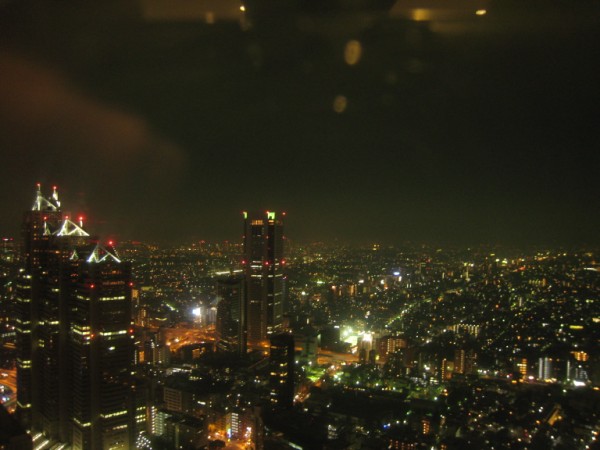
It was disappointing, though, that there wasn’t much to see because only the Tokyo Tower was adequately lit. Unlike Manhattan that shined and sparkled, Tokyo simply went dark at night. Even the nearby spaceship-like Mode Gakuen Cocoon Tower was in the energy-saving mode, and we could barely make out its outline due to the close proximity. Couldn’t really blame the Japanese for saving energy and preserving the Earth… but it was kinda lame…